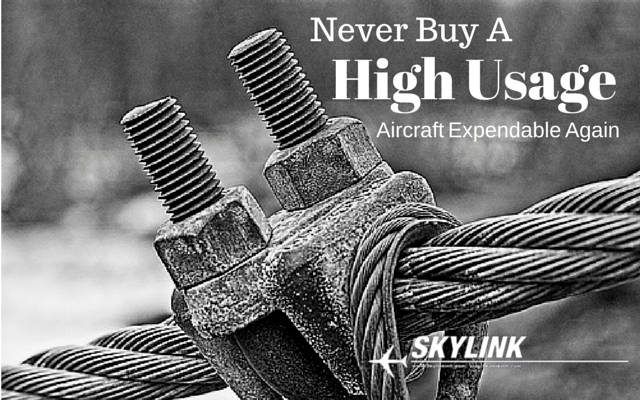Airlines and aircraft MROs are under the constant pressure of needing more cash.

Cash is the lifeblood for all organizations. Without it you’re heavily leveraged against debt, liquidity is non-existent, and the cash flow isn't able to sustain the core objectives of the organization.
It’s a lot of pressure. This is the trouble many airlines are up against.
I was speaking to an airline CEO a few weeks back and we began talking about his financial situation. They weren't driving enough gross profit and were highly leveraged against debtors. They couldn’t even take on a new strategy to get them out of the trouble they were in. The future of this airline is highly questionable and now they’re in discussion of being bought out by a much larger airline…to “save” them.
This CEO and the ones before him forgot cash flow is king.
Generating more cash and sustaining the core objectives is an imperative strategy to take full advantage of.
It’s really a no brainer. A must. A do or die mindset.
Too much cash is tied up in inventory
Right now, as my fingers twiddle away on this keyboard there’s a high value being placed on an airlines return on capital. You know, the accounting and finance calculations that put you to sleep during your undergrad.
Well now it’s time to wake up.
This particular formula tells you how well your airline generates cash flow relative to the capital invested. Important.
As an airline stocks parts, they reduce their capital liquidity and lengthen their cash flow cycle. Having inventory, both expendables and rotables, isn’t the best strategic decision for most airlines.
There’s too much time and money being tied up on the shelf. This stocking mindset has a negative impact on the return on capital. Your cash flow cycle lengthens and you become negatively leveraged against your inventory.
It’s risky, much like hedging fuel, but unless you want to open your own refinery like Delta, fuel risks are essential. Stocking risks are plain silly.
There's thousands of reasons why you should avoid excess inventory. Hear it from me, the less you have, the more cash you’ll have if the right strategy is in place.
Outsource your inventory needs
It’s very common to hear in the news about airlines outsourcing. Do you think the stewardess cooks the food or the pilot washes the windows? Not likely. The same is true for aircraft components…well it should be at least.
JetBlue outsources everything.
When you’re paying 20% a year for the value of your aircraft components in holding costs, you quickly feel the impact that inventory sucks cash.
There are many ways to go about this, but first think about your objectives. What issues are you trying to resolve? When deciding on a new strategy it’s always best to look for ways to reduce issues. You can then maximize efficiency later. It could be that you have millions of dollars tied up in inventory for your hub in Dubai, or that you spend too much money on high price, high usage components, and need more support with safety stock. Whatever it is, think hard.
When looking at your inventory and aircraft component needs you want to know which parts to stock (pooling and on-demand programs), where they're to be stocked, and how much to stock, including safety stock. Each component both rotable and consumable is classified by the following:
- Low price, short response time, high usage
- Low price, short response time, low usage
- Low price, long response time, high usage
- Low price, long response time, low usage
- High price, short response time, high usage
- High price, short response time, low usage
- High price, long response time, high usage
- High price, long response time, low usage
Don’t pay too much attention to price as that will naturally take care of itself if you outsource both your rotable and expendable consumption. You want to focus most of your efforts covering high usage and long response time items. These items will cause you the biggest problems if you don't have a proper strategy in place. They’ll also cost you the most money. I know, it’s weird how that works.
The best place to start is by reviewing the 300 - 600 rotables that are high usage, no-go items for your aircraft. If you have multiple aircrafts then you just do a simple math calculation and times those parts by the amount of aircrafts you have (of the same kind of course). This gives you a blueprint of what items cause you the most stress and what items consume much of your cash for inventory needs.
The same goes for expendables and consumables. Create a list of your high usage items. Although these are often times low priced, if you have a large fleet, the cost of the items can be in the millions. Reducing the time on shelf will ensure better cash flow management and eliminate wasteful activities.
The final decision for you to make is to outsource your rotable and expendable needs. If you hold $1,000,000 worth of inventory you’re likely paying $200,000 a year in holding costs to support your inventory. If you eliminated your inventory entirely you would have an additional $200,000 to support other important activities for your operation. A better cash management strategy I would say.
Save your money and outsource, it’s as simple as that.
P.S. We have a rotable Pooling program as well as an expendable On-Demand and Just In Time program to cover all of your cash management needs. Click the links to learn more or fill out the form below.






